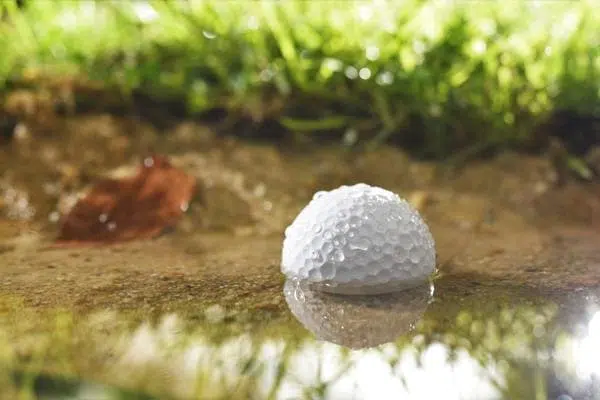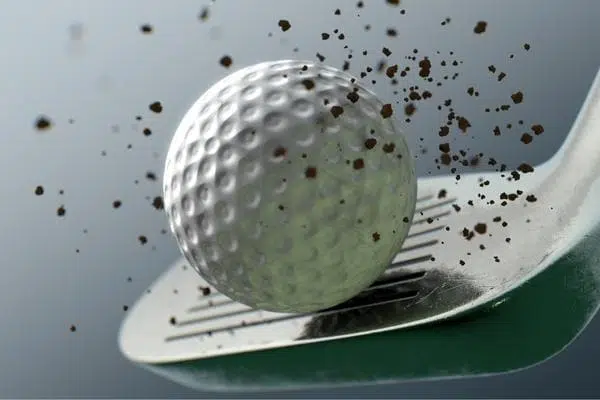How long a golf ball will last has a number of different elements to it.
Are we talking about out on course? If you’re anything like me, your ball is at risk of slicing OB or finding water at all times.
If your referring to wear and tear, there are a few signs to look for.
When it comes to general age of a golf ball, there are considerations to be had as well.
A golf ball can ‘stay good’ for up to a decade or so, as long as it isn’t stored at extreme temperatures. Despite this, older golf balls may not perform very well due to outdated technology. Regarding wear and tear, each round should generally begin with a new golf ball, that is if you didn’t break out a new one part-way through the last round you played.
It is a really touchy conversation for a lot of golfers, given that the cost of a dozen premium golf balls, such as Titleist ProV1s, can be in excess of $60, with the brain seeing dollars down the drain with every blazed shot out of bounds.
If you spend big money on balls, there can sometimes be an incentive to overuse them.
If this applies to you, it may be worth dropping down from a premium golf ball to a mid range one, such as making the move from Callaway’s Chrome Softs to their Super Soft balls.
They still perform pretty well, but can be as little as half the price.
Table of contents
How often should you replace golf balls?
You should replace your golf ball at the start of every round, unless it was only opened brand new towards the end of your previous round. This will mean the ball should be free of any marks, wear, or chunks missing, so their won’t be a negative impact on your ball flight from the beginning of your round.
However, there are some other factors here at play you should consider, such as what the layout of your opening hole is at the local course you play at.
If it has a tight OB or water hazard, a new ball can make you feel shaky – they aren’t cheap, after all – so I often like to play the first hole with an older one, then switch to a fresh ball once I get to hole two and the course opens up.
Do golf balls lose distance with age?
As a ball sees more use, performance will be effected, so distance will most likely drop off. Golf balls are designed to be quite durable and can withstand a fair bit if wear before losing performance, but it is best to switch balls every 18 holes. However, so long as you avoid any major damage to your ball, it can actually perform quite well for a number of rounds.
Titleist completed tests where a single ball was used for over 120 rounds, performed under controlled conditions where it only ever saw grassed fairways and greens.
They believe that after this amount of wear, an amateur golfer will still see quite similar performance to when it was new.
However, what this doesn’t take into account is the uncommon journey our golf balls can take where they become scuffed along a cart path or indented when cannoned into a tree.
When we put the ball in unnatural places, the impact can be far greater on it’s structure and wear.
So if you are able to keep the ball on the fairway – or at least the rough – and largely out of trouble, then you might find your ball actually travels the distance you’d expect for dozens of rounds.
Unfortunately, this is easier said than done.
Do golf balls get worn out?
Yes, golf balls get worn out, with scuff marks, chips and general wear and tear having an impact on performance. However, the impact is not as great as you might think, with studies showing that modern day golf balls will perform quite well for dozens of rounds, unless they suffer from a significant blow that causes clear damage or cracking.
Even if a scuffed up ball can perform well enough, for many people, the sight of the smallest scuff can start to get in their head and make them concerned about the ball’s ability to perform.
As annoying as this is – given the cost of premium balls – if you find your confidence wanes when your balls look banged up, changing them regularly might be the best thing for your game.
Are 20-year-old golf balls still good?
Golf balls that are 20 years old may still perform ok, as long as they have been stored safely at a moderate temperature. However, depending on the type of ball it is, it may perform very differently to the balls seen today with modern technology.
In the 2000 Masters, just over half the field used a balata ball, a type of ball with a wound inner surrounding a liquid core.
The next year, most players had transitioned to solid core balls, much more like what we see used today.
So, whether or not a 20 year old ball is still good will depend far more on the type of ball it is than the age, given balata balls travel far shorter than their solid core counterparts.

How long can a golf ball last in water?
The coating of modern golf balls attracts water, meaning that in as little as twelve hours a lake ball can become water logged, impacting the quality of the inner core. While lake balls may look like they are in good condition, any golf ball that has been submerged in water for more than a couple of days will see a decrease in driving distance.
Ball manufacture Vice make this clear on their website, imploring people to ‘forget lake balls’ due to the fact research has shown just one week in water can cost you 10 yards off of the tee.
Extend this period submerged out to three or four months and distance loss can increase to as much as 30 yards.
As frustrating as it may be, given their attractive price, it appears that lake balls aren’t really an option for the majority of golfers who want a ball that performs well.
Final message
Golf balls aren’t designed to last forever, however, it’s quite likely that you are condemning them to the bottom of your bag far sooner than you need to, with premium golf balls unlikely to drop off in performance for an amateur for several rounds.
If you do find yourself being stickler for replacing your ball at the sight of every scratch or scuff, consider buying cheaper options to get more bang for your buck, as many amateur golfers will struggle to see a difference between premium and second tier golf balls.

